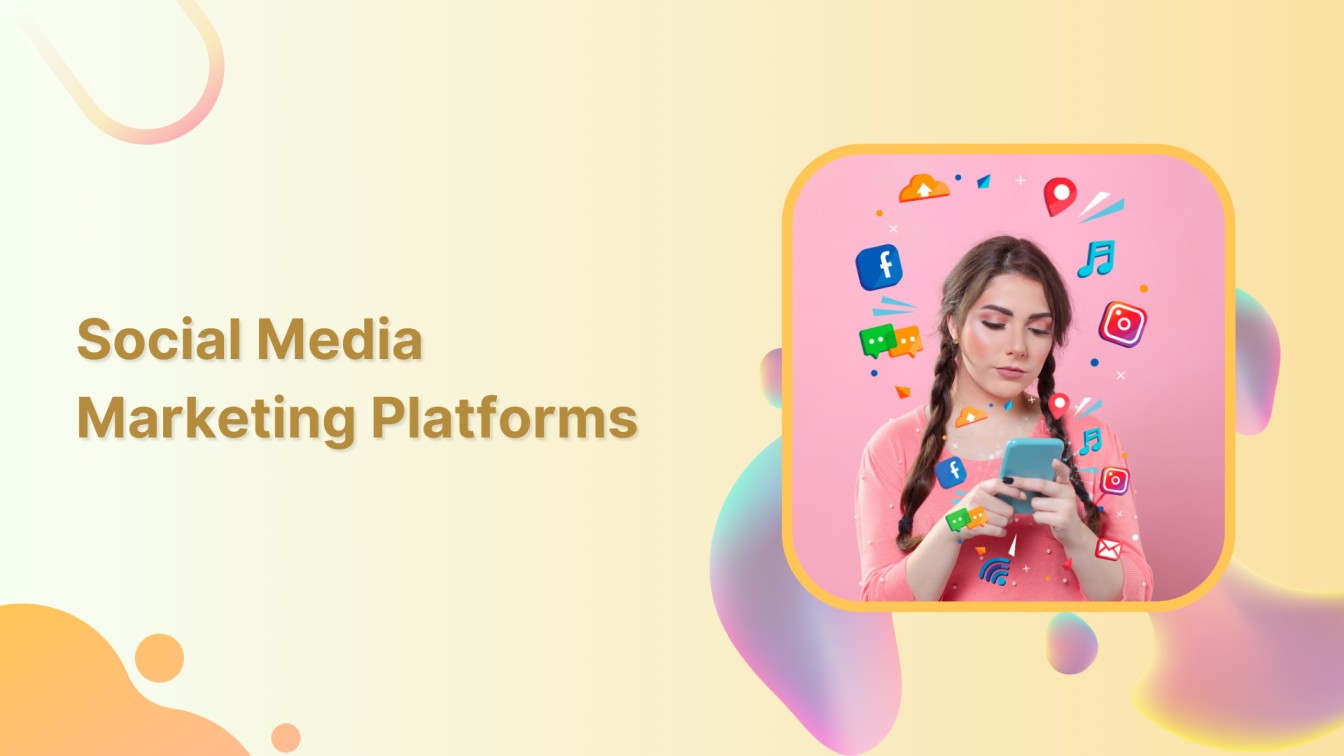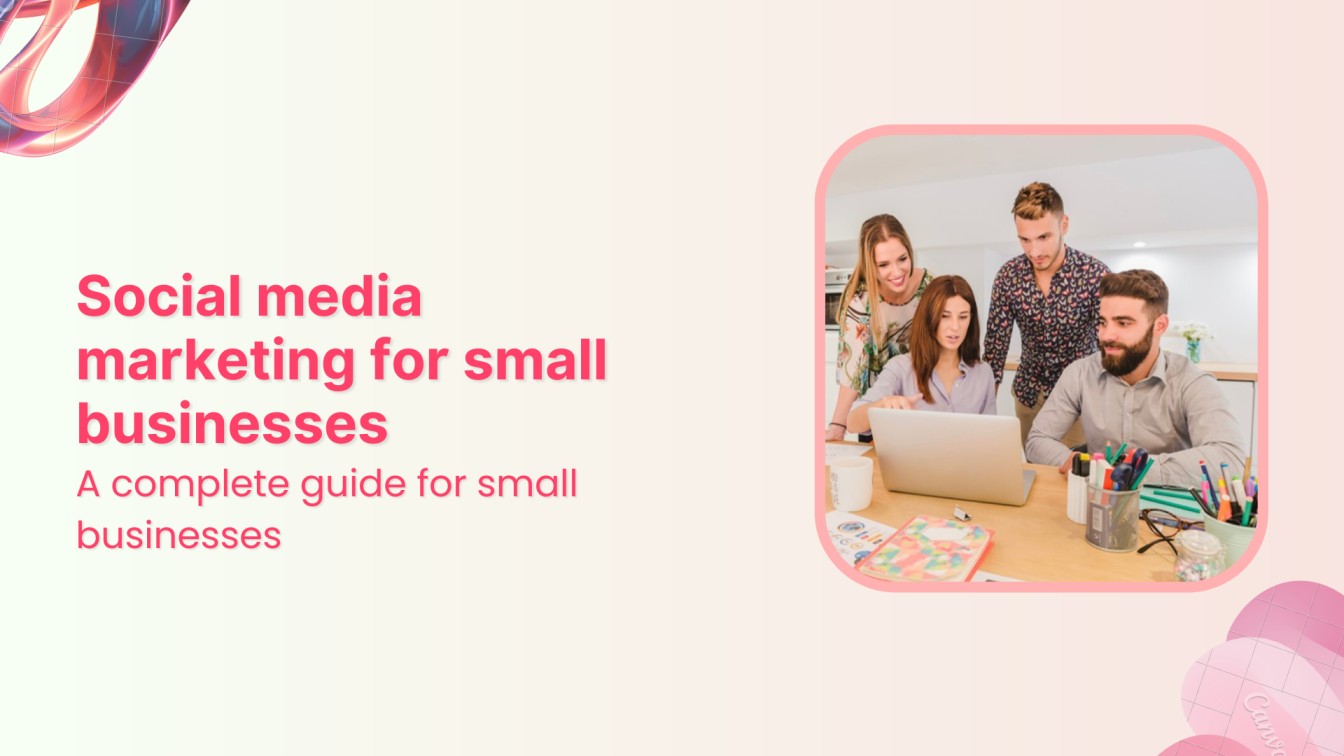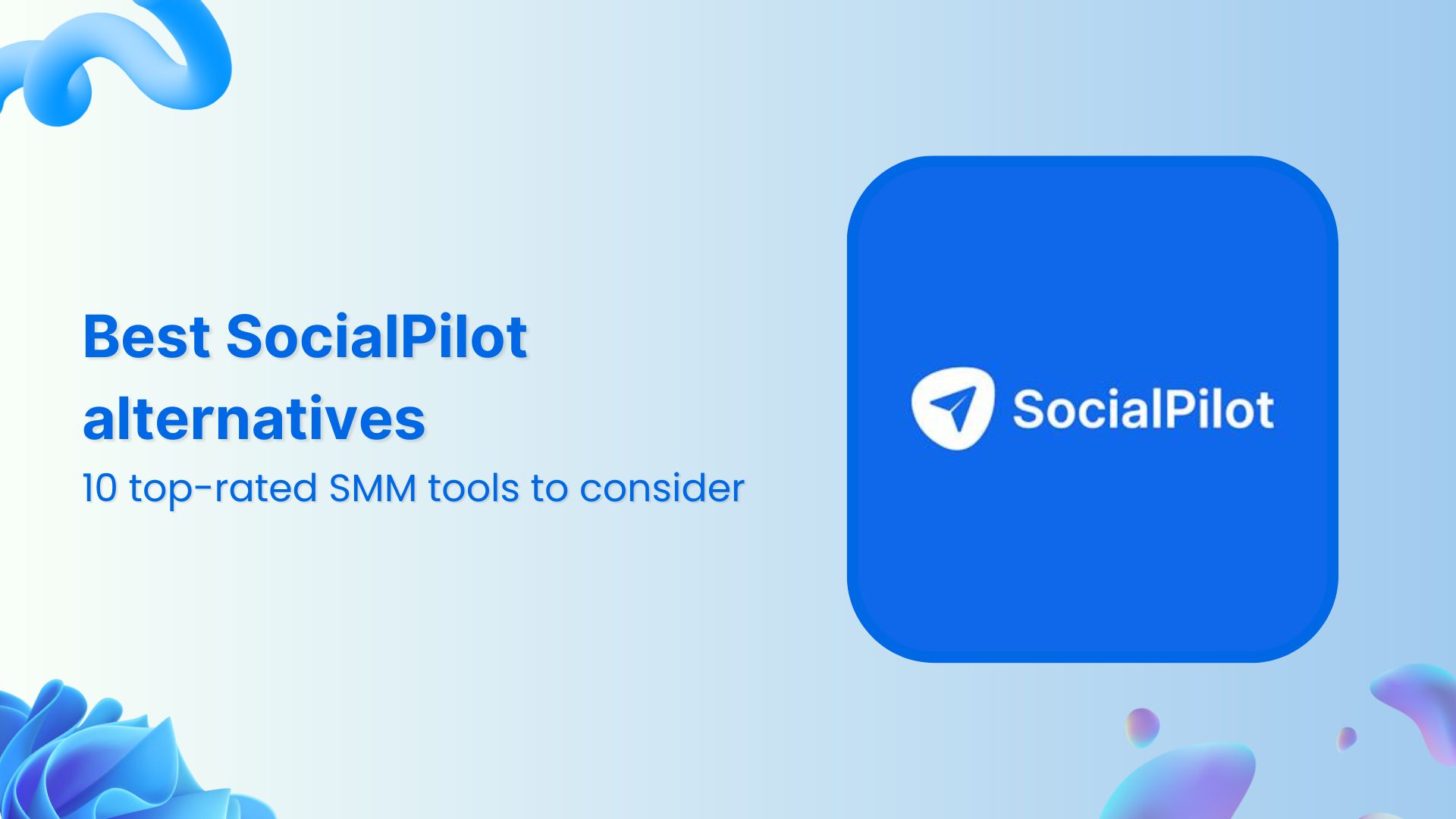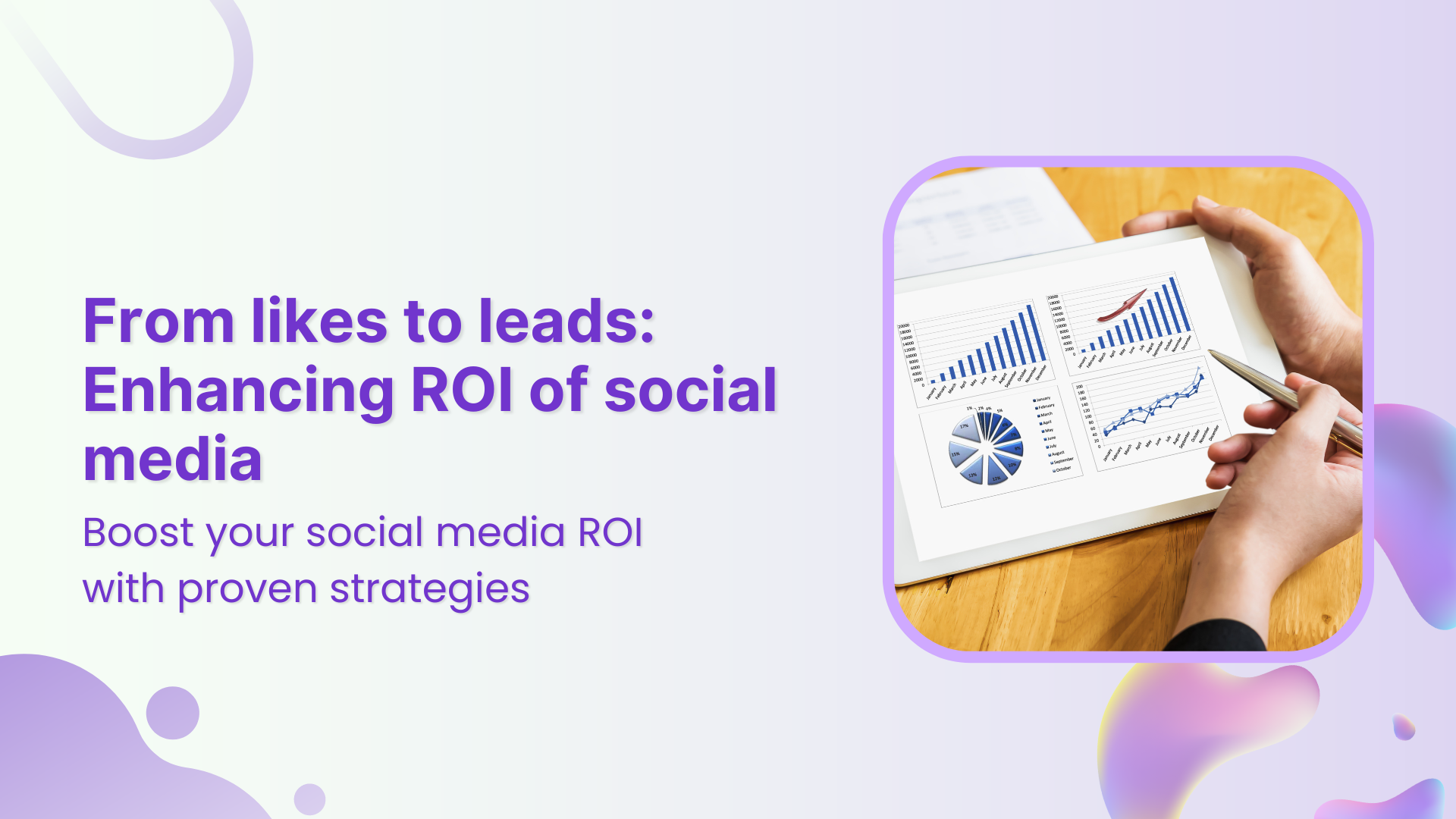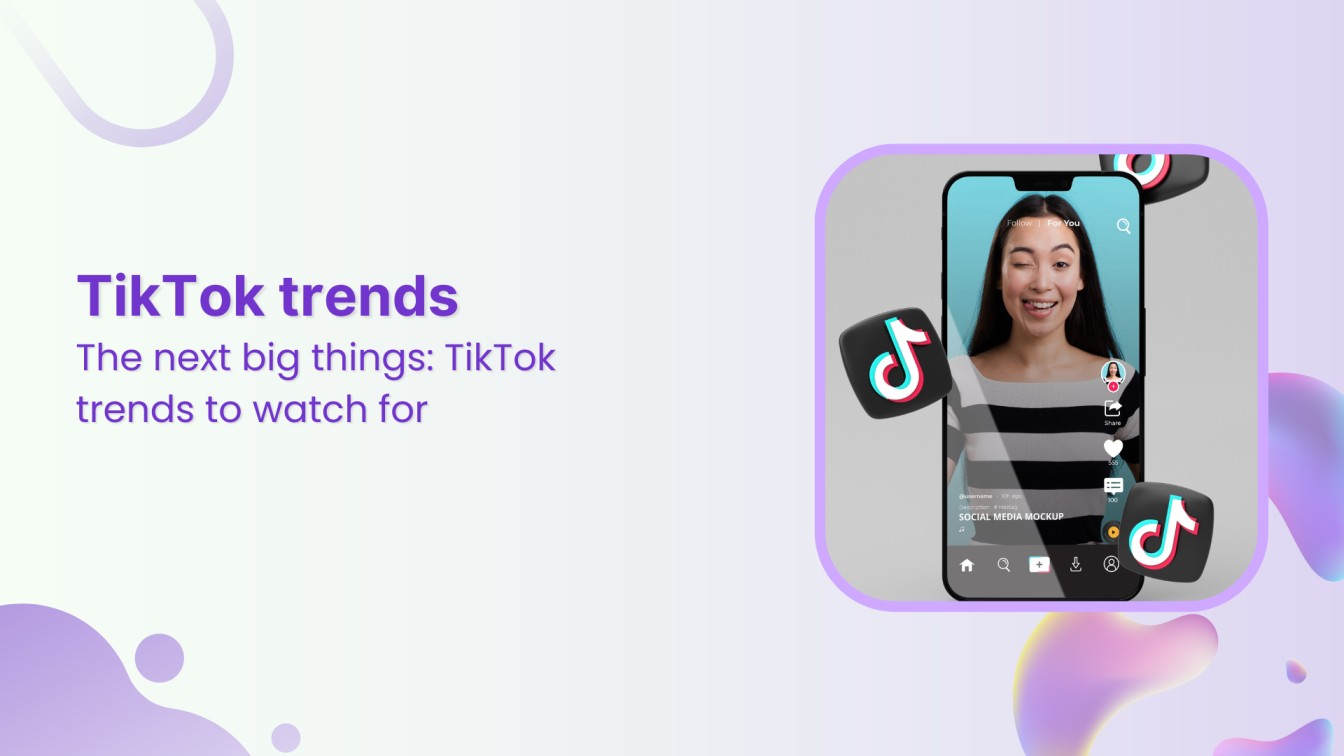Navigating the world of social media marketing requires a keen understanding of your audience and the unique features of each platform. The right platforms are paramount for success. In today’s rapidly evolving digital landscape, selecting the ideal social media marketing platforms for your business is a pivotal decision. With many options available, each catering to different audiences and engagement styles, navigating this terrain requires careful consideration.
Plan, schedule, share, and analyze content for 15+ social media channels.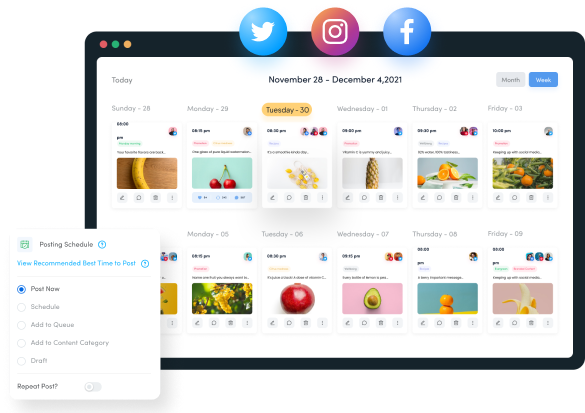


This blog serves as your compass, guiding you through various choices. We delve into the top social media marketing platforms that can elevate your brand’s online presence. Join us on this exploration as we decipher the nuances of each forum, helping you make informed choices that align seamlessly with your business goals and target demographics.
Why is choosing the right social media marketing platforms important?
Choosing the right social media marketing platforms is like finding the perfect gathering place for your friends. It’s crucial because it sets the stage for meaningful connections and conversations. Each platform has its unique vibe and audience, much like various hangout spots in a town. Picking the wrong one is akin to showing up at a formal gala in flip-flops – you’ll likely miss out on valuable opportunities and connections.
But your brand or message can shine when you get it suitable and find that platform where your audience feels most at home. It’s like finding that cozy coffee shop where everyone knows your name – a place where your voice resonates, your content thrives, and your goals can be achieved. In this digital age, choosing wisely is not just about reaching people; it’s about engaging with them, making it essential.
How to choose the right platform for your social media marketing?
When navigating the vast world of social media, it’s more than just numbers and algorithms; it’s about connecting with people. Here’s my take on how to choose the right social media marketing platforms with a personal touch:
1. What industry are you in?
So, you’re thinking of diving into the social media world? Well, the first step is understanding your industry. Consider the nature of your industry or niche. Imagine you’re running a cozy local coffee shop like the one people love visiting every morning. Instagram and Facebook might be your best bet. People love sharing pictures of their daily coffee rituals, and these platforms are great for building a community around your coffee-loving audience.
Read Up: 10 Social Media Branding Tips for Brands in 2023



Different social media platforms cater to varying demographics and interests. For example, if you are in the fashion industry, platforms like Instagram and Pinterest, known for their visual appeal, might be suitable. In contrast, B2B companies may find LinkedIn more effective for networking and lead generation.
Related Read: How to Create a B2B Social Media Strategy
2. What resources are available to you?
Let’s be honest; we all have limitations. Managing a presence on every social media platform can be overwhelming if you’re a one-person show or a small business. I’d recommend starting with the platforms that align with your resources. You could create fantastic short videos for TikTok, or you’re a wordsmith for Twitter. Choose platforms that allow you to shine without spreading yourself too thin.
Your available resources, including time, budget, and personnel, play a significant role in platform selection. Managing multiple social media accounts can be resource-intensive. Smaller businesses or individuals might prioritize platforms that align with their content creation and engagement capacity.
3. Define your goals
Why do you want to be on social media? For your business, it could be entirely different from someone else’s. Are you looking to create a buzz around a new product, engage with your customers, or simply showcase your expertise? Each platform has unique strengths that can help you achieve specific goals.
Clearly define your social media goals. Are you aiming to increase brand awareness, drive website traffic, generate leads, or boost sales? Each platform has unique strengths that align with specific objectives. For instance, Facebook is great for community building, while YouTube is ideal for educational content.
Also Read: How To Build a Facebook Community For SAAS Business?
Here, we’ll dive deeper into various objectives you might consider:
Setting clear and well-defined goals is the compass that guides your social media strategy.
- Increasing brand awareness:
Brand awareness is the bedrock of your online presence. It’s about ensuring that your brand comes to mind when people think of your industry.
To measure success, we Look at metrics like reach, impressions, and share of voice in your industry or the strength of your brand identity. Monitor the growth of your social media following and brand mentions.
This can be achieved by sharing compelling and consistent brand stories, eye-catching visuals, and memorable messaging. Nowadays, collaboration with influencers and engaging in partnerships that align with your brand values to extend your reach is the most beneficial. Here is an example:
- Driving website traffic:
Your website is your digital hub where conversions happen. Driving traffic to your site increases the opportunities for users to explore and engage with your content, products, or services.
This can be done by analyzing website analytics to track the number of visitors coming from social media, their behavior on your site, and conversion rates.
There are several ways to drive website traffic, such as sharing content that teases what’s on your website using intriguing headlines and visuals. Promote blog posts, landing pages, and product pages. Use trackable links and consider running targeted ad campaigns.
- Generating leads:
Leads are potential customers who have shown interest in your offerings. Converting them into customers is more manageable than starting from scratch.
To generate more leads, offer valuable resources like ebooks, webinars, or exclusive discounts to incentivize sign-ups. Use compelling CTAs, landing pages, and automated email marketing to nurture leads into conversions. Here is one of the ways ContentStudio does it gracefully with the help of popup CTA:



- Increasing engagement:
Engagement goes beyond likes and shares; it’s about forging deeper connections with your audience, which can lead to brand loyalty and advocacy.
Social Customer Service Never miss a message or comment from your social media audience. Try ContentStudio’s Inbox.


To increase engagement, create content that sparks conversations and discussions. Run interactive campaigns, contests, and polls. Respond promptly and thoughtfully to comments and messages. Showcase user-generated content and stories. P.S. We have 15 tips for you to grow your Instagram engagement rate!
Here is an example of how a well-known coffee brand does it on its Instagram:



- Boosting sales and conversions:
Ultimately, social media should contribute to revenue generation by converting followers into paying customers.
You can boost sales and conversions by sharing product showcases, customer reviews, and success stories. Implement shoppable posts and integrate easy purchase options. Leverage retargeting ads to re-engage potential customers who showed interest but didn’t convert.
Related Read: A Complete Guide On Growth Marketing – Top Tactics & Examples
Here’s how a skincare brand retargets its potential customers who left the items in the cart:


- Improving customer support:
Social media isn’t just a megaphone for your brand; it’s also a two-way communication channel. Providing exceptional support here can enhance your brand’s reputation.
To improve customer support, establish dedicated support channels on social media platforms. Train your support team to handle inquiries professionally and empathetically. Implement chatbots for quick responses and routing queries. Actively seek feedback and use it to improve your support services. Below is an example of good support handling.
P.S. ever wondered why brands need a social media monitoring strategy?



Remember, your social media strategy’s success hinges on aligning your goals with your business objectives. It’s crucial to regularly assess your progress, adapt your strategy based on the evolving digital landscape, and keep your audience at the forefront of your decision-making process.
Also Read: How to Build an Effective Social Media Strategy in 2022
4. Identify your audience and the platforms they use
Understanding your audience is like knowing your regular customers by name. You need to figure out where they hang out. Platforms like LinkedIn might not be your go-to choice if your cafe caters to young professionals. Consider demographics, interests, and online behavior to find the perfect match between your audience and social media marketing platforms.
Identifying and understanding your target audience is like tailoring a suit – it should fit perfectly. Here’s a comprehensive guide with real-world examples to help you master this crucial step in creating a successful marketing strategy:
- Market research:
Market research is the foundation of audience understanding. It helps you grasp your industry’s landscape and discover unmet needs.
Content Discovery Find the top-performing content on the web and never run out of social media post ideas.


If you plan to launch a new fitness app, research might reveal a growing trend for home-based workouts due to the pandemic. This insight could guide your app’s features and marketing strategy.
- Create buyer personas:
Buyer personas are fictional characters representing your ideal customers. They humanize your audience and provide actionable insights.
For a boutique travel agency, a buyer persona might be “Adventurous Amy,” a 30-year-old marketing professional who values unique travel experiences. Knowing Amy’s preferences helps tailor travel packages and content to her tastes.
- Analyze existing customers:
Your existing customers are a goldmine of information. Analyze their data to discover and uncover trends and preferences.
Related Read: 14 Instagram Trends to Boost Your Social Presence in 2023
A subscription box service might find that most long-term subscribers are young professionals who prefer eco-friendly and sustainable products. This can lead to curated boxes that align with this preference.
- Engage with your audience:
Direct interaction is priceless. Engage with your audience through various channels to gain firsthand insights.
A clothing brand could engage with customers on social media, asking for feedback on new designs. They can adjust their upcoming collections if they notice a preference for specific colors or styles. Here is how:



Also Read: Secret to Success: 12 Instagram Hacks to Boost Engagement
- Use analytics:
Social media analytics provide a wealth of data about user behavior on your digital platforms.
An e-commerce website, for example, can use analytics to see that a specific product category receives the most views but has a high bounce rate. This might indicate that visitors are interested but need help finding what they want, prompting product listings or navigation changes.
Social Media Analytics Fine-tune your social media strategy for success with in-depth analytics and white-labeled reports.


Understanding your target audience is paramount. Social media analytics tools like ContentStudio make it easier for businesses to evaluate their growth and performance:
5. Define your voice and tone for each social media platform
Think of your brand’s voice as your coffee shop’s ambiance. Each platform has its vibe, like a cozy corner cafe with soft jazz playing in the background. On Instagram, it’s like chatting with your barista: friendly, personal, and visual. But on LinkedIn, it’s a more professional conversation. Adapt your tone and content to resonate with the platform’s culture.
Read Up: How To Build Brand Voice With Social Media Automation
Each platform has its own culture and communication style. Define your brand’s voice and tone accordingly. Instagram may require a more visually appealing and casual approach, whereas Twitter may require concise and engaging messaging. Consistency in your brand’s voice across platforms is essential for building a cohesive online presence.
6. Analyze competitors’ platform presence
Competitors are like neighboring coffee shops. You can learn a lot from them. Look at what platforms they’re active on and how they engage their audience. Are they killing it on Instagram? That could be a sign that it’s working for your industry. Or are they surprisingly quiet on Twitter? There might be untapped potential there. Learn from their coffee brew, but add your secret blend.
A complete analysis can be done using social media analytics tools like ContentStudio that give a detailed insight at a glance:
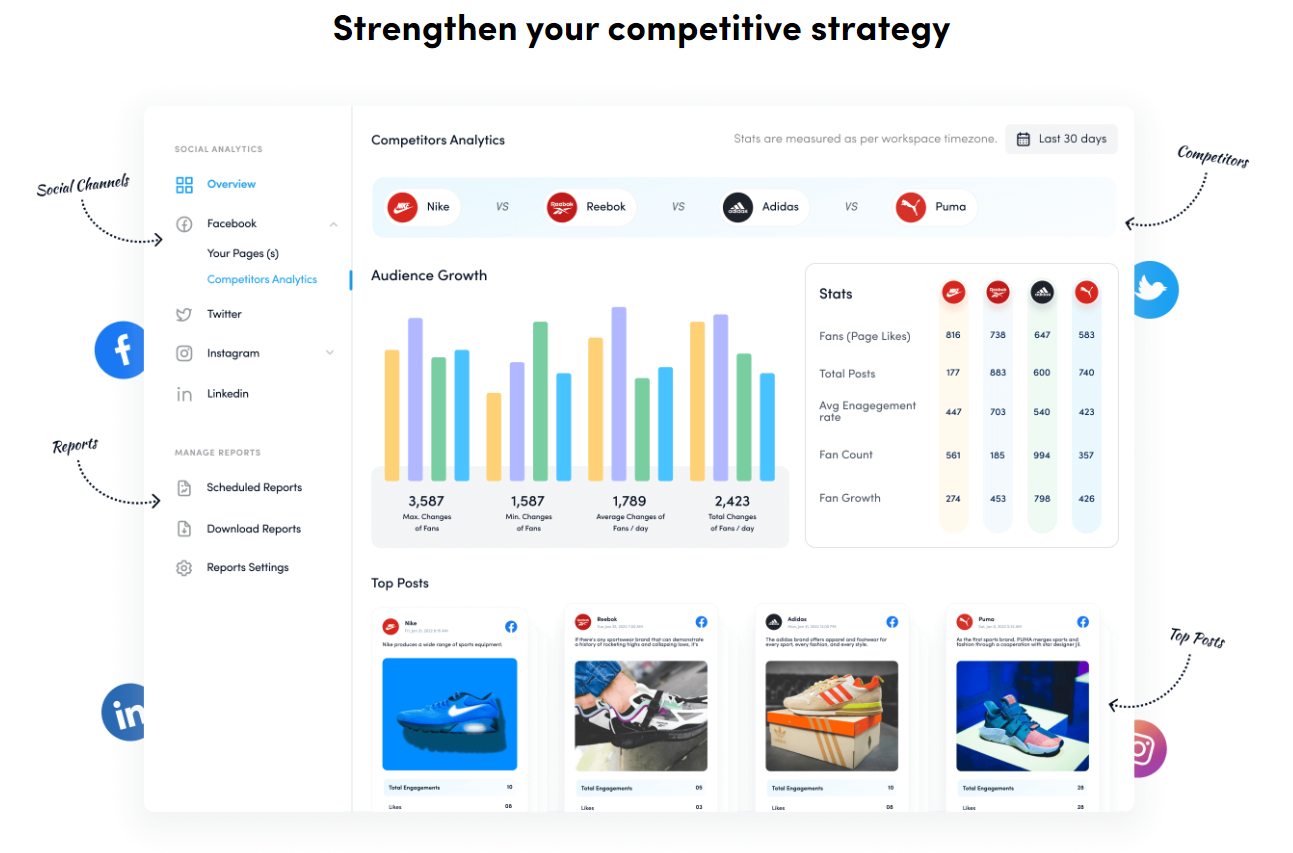


Understanding your competitors’ strategies is like having a road map through uncharted territory. Here’s a comprehensive guide, complete with real-world examples, on how to analyze your competitors’ platform presence effectively:
- Identify your competitors:
You can only analyze your competitors if you know who they are. Identify businesses or individuals in your niche or industry competing for the same target audience.
If you run a boutique bakery, your competitors could include nearby bakeries, specialty dessert shops, or even online cake decorators who ship nationwide.
- Examine their social media profiles:
Dive into your competitors’ social media profiles to understand their content, engagement strategies, and audience interactions.
If you’re in the fitness industry, observe how a competitor gym uses Instagram to share workout tips, client testimonials, and behind-the-scenes glimpses of trainers in action. If you are a sportswear brand, ContentStudio’s competitor analysis tool can help you examine social profiles:
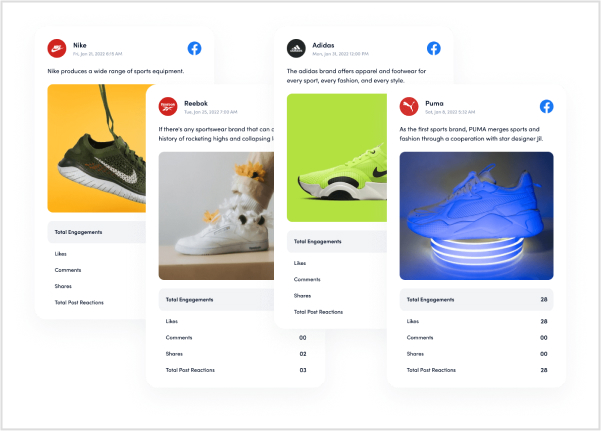


- Content analysis:
Take a closer look at the type of content your competitors are posting. Are they using images, videos, or blog posts? What topics do they cover, and how frequently do they post?
A travel agency might notice that a competitor regularly shares travel guides and destination highlights on their blog, leading to increased organic traffic and engagement.
- Engagement metrics:
Engagement metrics, such as likes, comments, and shares, reveal how well your competitors’ content resonates with their audience.
A fashion brand might find that a competitor’s posts featuring user-generated content receive more likes and shares than product shots, indicating a preference for authenticity.



- Follower demographics:
Analyze your competitors’ follower demographics to understand who their audience is. Look for age, gender, location, and interests.
An eco-friendly cleaning product company could discover that their competitor’s Instagram audience primarily comprises environmentally conscious millennials in urban areas.
- Posting schedule and frequency:
Examining when and how often your competitor’s posts can help you determine optimal and best posting times and cadence.
A tech startup may find that a competitor consistently posts industry news every weekday morning, attracting professionals to check their social media over coffee.
- Engagement tactics:
Pay attention to your competitors’ strategies to engage with their audience, such as responding to comments, running contests, or leveraging user-generated content.
A pet food brand may notice that a competitor frequently hosts “Pet of the Month” contests, encouraging customers to share photos of their pets to win free products.
- Analyze their website and landing pages:
A competitor’s website can reveal valuable information about their sales funnel, lead generation efforts, and product offerings.
A software company might explore a competitor’s website and discover they offer free downloadable whitepapers in exchange for visitor’s valid email addresses, a strategy that builds their email list.
- Social advertising:
Investigate whether your competitors are running social media advertising campaigns. This can provide insights into their promotional strategies and target audience.
An e-commerce store might notice a competitor running Facebook ads promoting seasonal sales to users who have previously visited their website but have not purchased it.
- Track their influencer partnerships:
Identify if your competitors are collaborating with influencers. This can shed light on potential marketing opportunities within your niche.
A makeup brand could observe a competitor partnering with beauty influencers to showcase new product launches, prompting them to explore similar collaborations.
Study your competitors’ social media strategies. Analyze which platforms they are active on and how successfully they engage their audience. Identify gaps in their strategy that you can exploit. Learning from their successes and failures can provide valuable insights into platform selection.
Some major social media platforms
Now that you have enough knowledge to choose the right social media marketing platforms that set well for your business let’s have a look at some major social media platforms to help you connect with your target audience:
1. Facebook



With its staggering 2.85 billion users as of 2021, Facebook surpasses China’s population. However, it’s vital to recognize how people use Facebook as a platform to nurture relationships and stay in touch with old friends. Apart from the Facebook Live feature, it lets you post photos, text, videos, and other content. This makes Facebook an ideal space for fostering loyalty among your existing customer base. Yet, it may be challenging to reach new audiences due to its massive user base, limiting the organic reach of your posts, even within your networks.
Facebook Marketing Manage and grow your brand on Facebook. Create, schedule, and publish posts, videos, and Reels to Facebook pages and groups.


When considering Facebook among your social media marketing platforms, carefully align it with your business objectives. It might not be the best choice if you aim to acquire new customers. Still, if you’re dedicated to maintaining a loyal clientele and need a platform for consistent communication, Facebook is an excellent option. P.S. looking for the perfect Facebook scheduler?
2. X (Formerly Twitter)
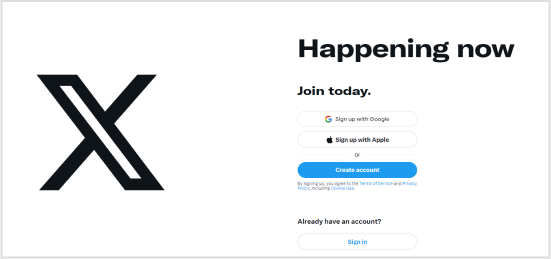


Twitter is a powerful platform for brand awareness, with its 396.5 million monthly active users. Making connections, sharing resources, and keeping updated with the latest news and trends make it the right fit for your business. Its use of hashtags allows you to join conversations on trending topics, providing insight into what’s currently capturing people’s attention. Twitter impressions also contribute a whole lot to brand awareness and reach. Brands often use Twitter for real-time updates and event engagement. You can create and share viral tweets with the ultimate Twitter scheduler and enhance your brand’s visibility and engagement by strategically participating in relevant conversations and hashtags.
Also Read: What Is The Best Time To Post On Twitter in 2023
3. Pinterest



Pinterest is a digital scrapbook with 445 million monthly users where users “pin” photos and videos to virtual bulletin boards. It predominantly attracts a female audience, and standard pins range from recipes and style ideas to captivating images and DIY projects. Given its visual nature, Pinterest demands compelling graphics to captivate users. Successful businesses on Pinterest often report increased retail sales, making it an attractive platform for visually oriented brands. If you’re worried, we have a complete guide to schedule Pinterest pins in 2023 just for you!
Related Read: Pinterest Performance Metrics – Social Media Analytics from ContentStudio
4. YouTube



YouTube gets over 14 billion user visits monthly, surpassing the visitor count for Facebook, Instagram, and even Wikipedia! YouTube transcends its user base, as content can be viewed without registration. It lets you view, download, rate, comment, and even upload your content. It has become one of the largest search engine platforms for “How To” videos. Service-based businesses that offer instructional range thrive here, with creators focusing on lifestyle and education, keeping in view the YouTube SEO tactics.
Related Read: How To Boost Your YouTube Views In 11 Simple Ways
5. LinkedIn



LinkedIn stands out as a platform favored by older audiences, particularly those aged 25-49. It maintains a niche focus and is primarily used for job searches and professional networking. Consequently, LinkedIn proves valuable for B2B lead generation, professional networking, and recruitment efforts.
Related Read: How to Use LinkedIn Creator Mode Effectively?
LinkedIn Marketing Establish your brand’s profile on LinkedIn by consistently posting engaging content and engaging with the community.


6. Instagram



Instagram, one of the fastest-growing platforms, particularly among younger audiences, emphasizes visual content. Users can follow, comment, and send direct messages in case of any queries or communication. Much like Pinterest, it relies on photos and short-form videos, Instagram reels for communication. As such, Instagram excels for businesses in visually-oriented industries such as art, food, retail, and beauty. Its relative newness also means less saturation than Facebook, making it a prime platform for lead generation, expanding your reach, and boosting your sales. Instagram shops and shoppable posts also provide you with a better business avenue.
Wondering how to use Instagram to stay ahead of your competitors? Try our free Instagram Competitor analytics tool!
Instagram Marketing Schedule your Instagram posts, Reels, and Stories, and get recommended best time to publish for maximum engagement.


Also Read: Instagram for Business: 14 Tips to Grow Your Audience
7. TikTok



TikTok is renowned for its 15-second short-form videos and caters to a youthful demographic, majorly. It’s especially effective for targeting the 18-24 age group and building brand awareness. Like Pinterest and Instagram, TikTok suits visually oriented businesses in art, food, retail, beauty, and service industries.
Related Read: How to Build a TikTok Marketing Strategy for Your Business?
Wrap up
In conclusion, there is more than one-size-fits-all social media platform for marketing success. Choosing the right social media marketing platforms is like crafting the perfect cup of coffee – it requires a personal touch and a dash of strategy. Your target audience, goals, products, budget, and other factors should drive your choice.
However, it’s crucial to remember that social media thrives on relationships. Even the most brilliant content can only go so far if your interactions with others are lacking. So, in crafting your social media marketing strategy, never forget the ‘social’ aspect – building and nurturing meaningful connections can be the key to unlocking the full potential of your digital presence.
Nawal Mansoor
Meet Nawal, the savvy Marketing Specialist from ContentStudio, who keeps up with the latest trends and technologies ready to elevate your social media and content marketing game. With a knack for crafting engaging and accessible strategies, she empowers brands to shine in the digital spotlight. Beyond the digital landscape, Nawal is an adventurous soul always travel-ready!

